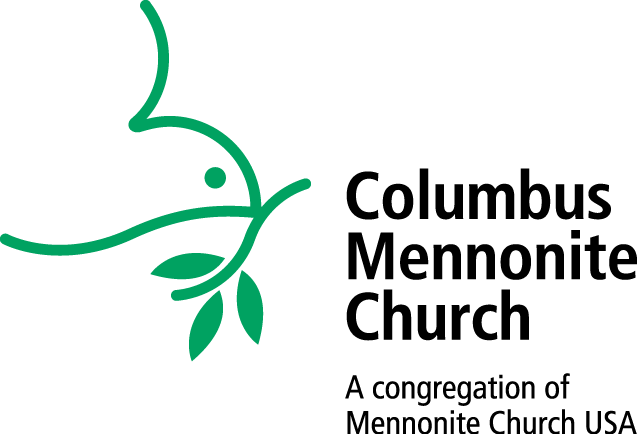1,2,3, more… | Easter | April 21
Text: Luke 24:1-12, John 20:1, Matthew 28:1-2, Mark 16:1-2
Speaker: Joel Miller
When I say Christ is Risen, you say Christ is Risen Indeed.
Christ is Risen….Christ is Risen.
How many people does it take to witness resurrection?
How many people does it take to witness resurrection?
It sounds like the set up line of a bad joke.
Like, How many Mennonites does it take to change a light bulb?
We probably shouldn’t go there. Change can be a sensitive topic.
Back to the first question, which is not a joke. How many people does it take to witness resurrection?
Our Bibles contain four gospels, and thus four accounts of those first witnesses of resurrection, at the empty tomb, that first Easter morning. You’d think of all the stories to get the particulars just right, this would be it. The continuation of the Jesus story hinges on this – that the crucifixion is not the end of the line. That Jesus most certainly died, and that this same Jesus, in some wonderful and glorious way, has been raised up, and is very much alive in this world.
And it all starts early on that first day of the week, after the Sabbath, when the women go to visit the tomb. To properly anoint the body. To honor the life. To grieve the one they loved who had loved them so dearly.
You’d think a single story of what went down that morning would emerge. Each gospel writer carefully adhering to those details.
Remarkably, each gospel has a different way of answering that question: How many does it take to witness resurrection?
This is Year C in the lectionary, the year of Luke’s gospel. So we’ve heard that reading. Of all the accounts, Luke’s scene at the empty tomb is the most…crowded, shall we say. He names some of the women who were there, and…
(Not) business as usual | Palm Sunday | April 14
Text: Luke 19:28-48
Speaker: Joel Miller
This is how it works: When the ruler or conquering general comes to town you run out to meet him. City leaders and citizenry surround the procession. There are songs and loud acclamations. You reach the entrance of the city and the pageantry continues through the streets. You hail the general’s greatness. You welcome him as god’s own, sent to you.
This is how it worked in the ancient world.
The Greek biographer Plutarch writes this about the entrance of Mark Antony into Ephesus:
When Antony made his entrance into Ephesus, women arrayed like Baccanals (Bacchus the god of wine and revelry), and men and boys like satyrs and Pans (part goat part man), led the way before him, and the city was full of ivy and (decorative wands) and harps and pipes and flutes, the people hailing him as Dionysius Giver of Joy and Beneficent. For he was such undoubtedly, to some. Plutarch, Antonius, 24.3-4
Another flourish was for the visiting ruler to enter the local temple and make a sacrifice, claiming his god-ordained authority in that space.
The first century Jewish historian Josephus writes this about Alexander the Great’s entrance into Jerusalem:
Then all the Jews together greeted Alexander with one voice and surrounded him..[then] he gave his hand to the high priest and, with the Jews running beside him, entered the city. Then he went up to the temple where he sacrificed to God under the direction of the high priest. Josephus, Antiquities of the Jews, 11.332-336
That’s how it works.
This is how it goes. When the Passover approaches, you get ready. You prepare your house, you prepare your heart, you prepare for a trip. A pilgrimage to the temple. You and your whole extended family. It could take several days, so you pack what you need. But you…
Those Who Dream | Lent 5 | April 7, 2019
Texts: John 12:1-8; Isaiah 43:16-21; Psalm 126
Speaker: Mark Rupp
“Do not remember the former things or consider the things of old.”
It is a strange command from a prophet who only moments before had wasted so much breath and spilled so much ink to remind the people about those former things, to recall their story of God liberating them from slavery and bringing them through the sea. This Exodus story looms large within the identity of the Israelite people. It is, in many ways, their founding story; it defines who they are. They remember, and re-remember, and consider, and reconsider this story through rituals and worship, not unlike we do in this space with our founding story of Christ.
The prophet invokes the story of the Exodus, claiming to speak for the God who brought the people through the sea and extinguished their enemies like a wick, so when he suddenly makes a u-turn and tells the people not to remember these former things, it would have come as a surprise. Rather than a denial of the importance of remembering, however, I see this line as a rhetorical device meant to get people’s attention, to make readers perk up and say, “What’s he doing here?”
There is a pregnant pause…then the voice of God continues through the prophet, “I am about to do a new thing; now it springs forth, do you not perceive it?”
To understand this new thing, it is important to understand the context in which the prophet is writing. The book of Isaiah is actually better understood as the books of Isaiah, with different authors writing during different movements in the history of the Israelite people. The passage here in chapter 43 falls in the second major movement where it is widely thought that the prophet is writing during the exile…
Prodigal. Awareness. | Lent 4 | March 31
https://joelssermons.files.wordpress.com/2019/04/20190331sermon.mp3
Text: Luke 15:1-2; 11-32
This is a parable about a prodigal son. This son requests an early inheritance, goes away and spends it, all of it. He returns home in desperation.
This is a parable about his older brother who stayed home to run the family business. Uncelebrated. And he is unwilling to celebrate the return of his desperate, disgraced brother.
This is a parable about a father. It’s about a father, and his two sons.
This is a parable about a mother and her two very different children. How in the world did these children come from the same mother? So small and precious and then, well, they grow up, don’t they?
This is a parable composed of different generations.
It’s a parable about what we inherit – and not just the property, but the love, the unspoken expectations, the patterns, the scars, that get handed down through the generations. It’s about how we receive all those things. And whether there will be anything of value that passes through us to the next generation.
In this parable, the very different brothers may or may not find a way to live together in peace. The mother will try her best, but those children do have a mind of their own.
The father is wealthy, that much is clear. Property, servants, fields – large prosperous fields, a robe, a ring, plenty in reserve to throw a feast at a moment’s notice and invite the whole neighborhood.
Let us suppose he was not one of those mythical self-made men who started with nothing and made it big. Let us suppose that he himself was the recipient of a great inheritance, and that his parents received the wealth of their parents after they were dead and gone, generations on back.
There were other peoples who once lived on the same lands many…
Fig tree | Lent 3 | March 24
Texts: Isaiah 55:1-9; Luke 13:1-9
Speaker: Rachael Miller
“Scripture says: Everyone shall sit under their own vine and fig tree, and no one shall make them afraid.”
Everyone shall sit under their own vine and fig tree, and no one shall make them afraid.
This line from the musical Hamilton comes from Micah, chapter 4. It’s the bit that follows the familiar verse:
They shall beat their swords into plowshares,
and their spears into pruning hooks;
nation shall not rise up against nation,
neither shall they learn war any more.
It is an image of peace, prosperity, and safety. The fig is a ready image and a frequent metaphor for the people of ancient Israel. It is used to signify both times of prosperity (as when the tree is full of fruit), and times of unrighteousness and divine judgement (as when the tree has no fruit).
In the parable Robin just read, the fig tree is barren. I haven’t heard many sermons on this passage in my life. What I have heard, and as I’ve read this on my own, the thrust of the parable is this: all sinners are alike and deserve death, and if you can get on it and start properly bearing fruit, you might escape the fires of hell. Even when it’s not taken that far, the argument is similar. Do more for God. It is as though the fig tree, and those it represents, are not doing enough to bear fruit. That it needs to step up and start producing already.
I want to invite us to hear something different this morning.
There are 2 reasons I think a different reading is warranted. First, the story of our faith is a story of impossible life. God shows up again and again throughout scripture to transform barrenness into fullness of life. The story of Sarai, which we heard…

